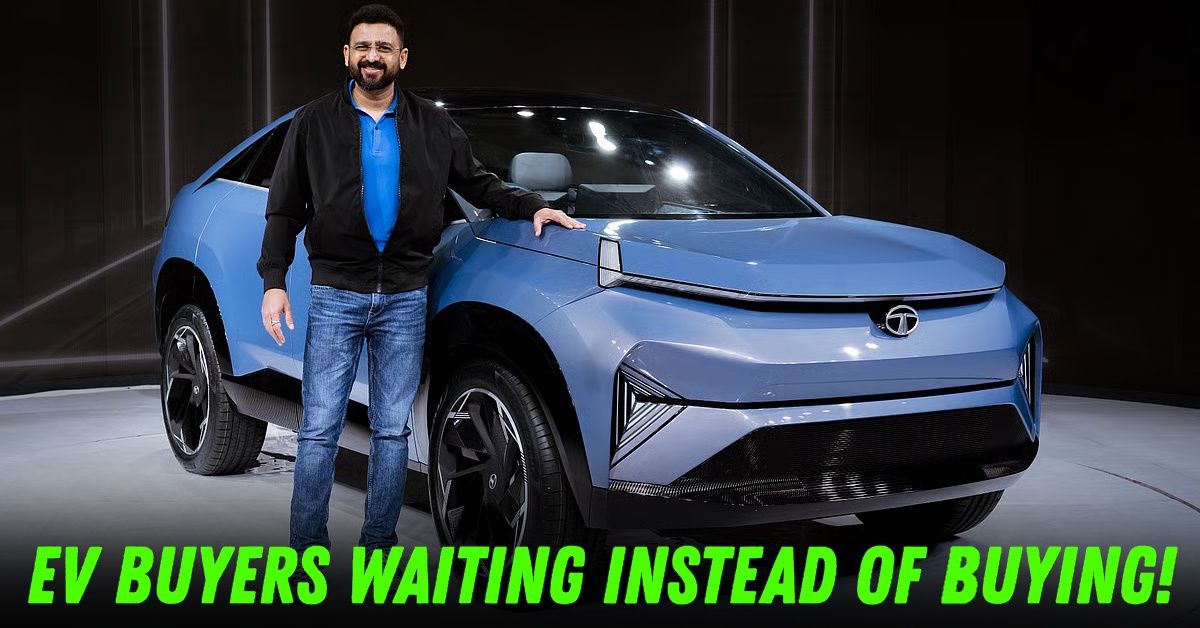Why Are Electric Car Buyers Waiting Instead Of Buying: Top Tata Motors Official Explains


Electric vehicles (EVs) from Tata Motors—such as the Nexon EV and Tiago EV—have become increasingly visible on Indian roads. The company has been at the forefront of the country’s EV movement, offering models that appeal to both early adopters and everyday buyers. Yet, despite this growing presence, a large section of potential consumers remains hesitant. The question is no longer about awareness or availability; it's about timing—when to buy, not whether to buy.
Talking to ET, Vivek Srivatsa, Chief Commercial Officer at Tata Passenger Electric Mobility, sheds light on this evolving consumer behaviour. He points out that while the initial wave of EV buyers were tech enthusiasts eager to try something new, the current market consists of more cautious, value-oriented individuals.
These buyers want to ensure that the product not only delivers innovation but also justifies its cost over time. “Consumers now expect more value over time—so they delay purchases, hoping for better tech or lower prices,” Srivatsa says. Buyers are weighing their options more carefully, balancing enthusiasm with practicality.
One of the most significant barriers continues to be the upfront cost of EVs. While operational expenses are typically lower than petrol or diesel cars, the initial price tag can still be daunting. Tata Motors has recognised this issue and has taken some steps to make its EVs more accessible to a wider audience. Price adjustments and added incentives such as free charging at select stations are aimed at making the decision easier for fence-sitters. Still, the perception of EVs as premium products remains hard to shake off, especially for price-sensitive buyers.
Another key reason for hesitation is the pace at which EV technology is evolving. With every passing quarter, manufacturers are rolling out vehicles with longer range, faster charging capabilities, and more connected features.
For the average buyer, this raises a legitimate concern: will the EV they buy today feel outdated in just a year or two? This fear of premature obsolescence leads many to delay their purchase, hoping that the next version will offer significantly more value for money.
The expansion of charging infrastructure is happening, but it’s uneven. While metropolitan cities are seeing a steady increase in charging stations, smaller towns and rural areas continue to lag behind. For many buyers, especially those who drive long distances or live in areas without reliable public charging, this remains a sticking point. Without the confidence of a dependable charging network, the switch from petrol to electric feels risky.
Tata Motors is fully aware of these market dynamics and is actively working to address them. From building partnerships to expand the charging network to continually enhancing its product offerings, the company is trying to reduce the gap between EV potential and buyer readiness. The focus now is on ensuring that the value proposition of an electric car is strong enough to nudge the undecided buyer towards action. This includes improving overall ownership experience—right from pricing to after-sales support and public charging availability.
The EV revolution in India is no longer a question of if—it’s a matter of when. The groundwork is being laid, the products are improving, and the ecosystem is slowly taking shape.
Yet consumer hesitation is real, shaped by concerns that are practical rather than philosophical. For Tata Motors and other players in the space, the challenge is to keep pushing forward—addressing concerns head-on, offering meaningful incentives, and making sure that when buyers do decide to switch, they feel ready, not rushed.